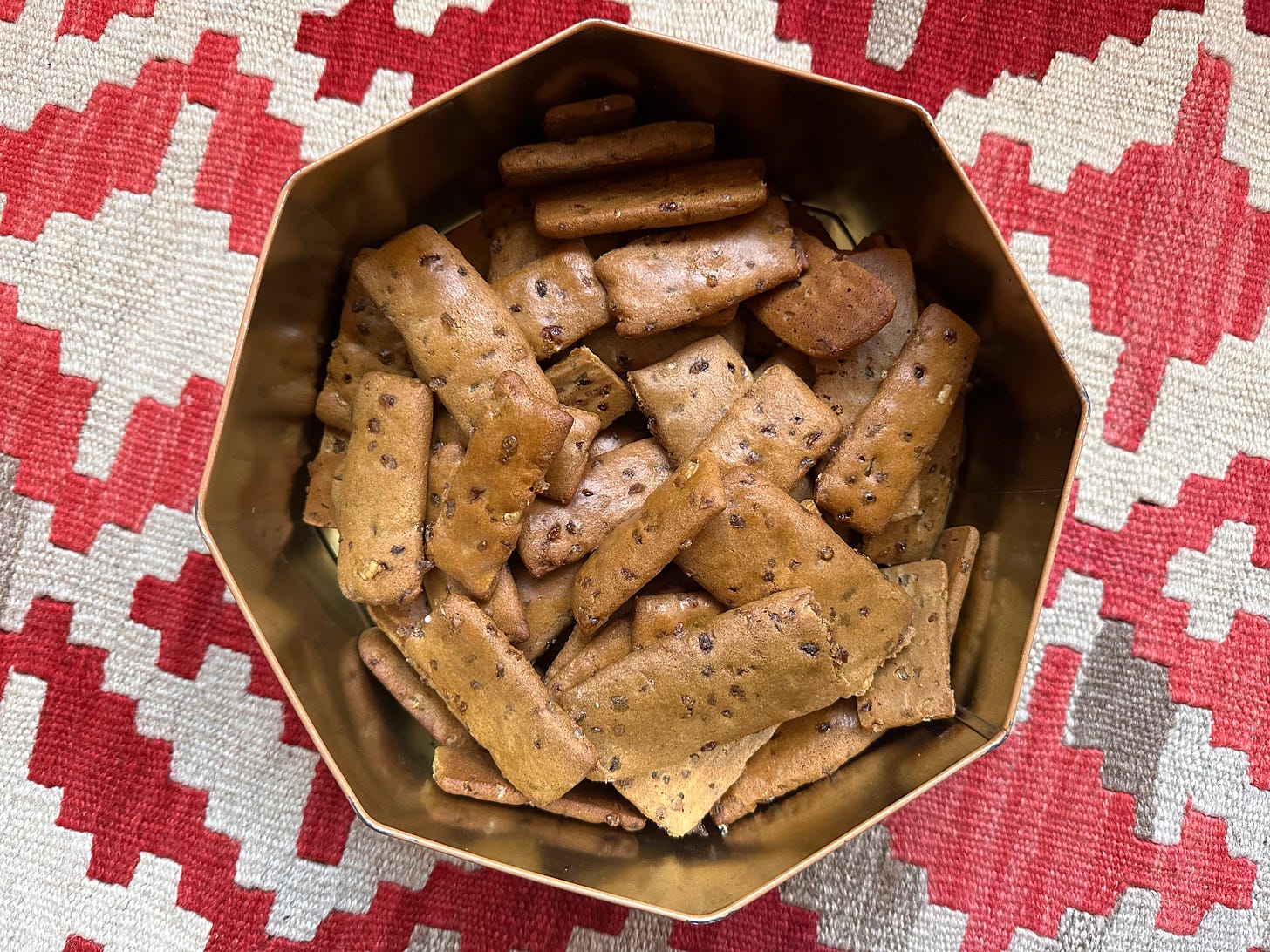Dear readers,
in my excitement about the Printen recipe, I made a very big mistake and wrote “baker’s ammonia” everywhere that I meant to write “potash.” Potash, potassium carbonate, is a different leavener from baker’s ammonia. (Pottasche in German.) I have fixed the original newsletter on the Substack site. To avoid confusion, though, I am resending the recipe with updated sources to find potash below. My deepest apologies!
To make Printen, you will need five “specialty” items:
Zuckerrübensirup, which is available for a couple Euros at every corner grocer here in Germany, can be found in the U.S./online here, here and here, for example. (In Canada, here and here.)
Potash, which give the Printen the most wonderful light and airy texture. It is absolutely worth seeking out this leavener, not just for Printen, but also for the classic Lebkuchen in Classic German Baking. In the U.S., you can buy it here, for example.
Grümmelkandis, or tea sugar, which you can find here and here. The pieces should be very small and pebbly, larger than Demerara sugar, but not too chunky. They can be crushed smaller in a mortar, if necessary (these, for example, would need to be crushed a little smaller.)
Candied orange peel, which you can make yourself, if you like, or buy here (minimum 1lb), here and here (Canada).
Lebkuchengewürz, a recipe for which is in Classic German Baking, or you can use the specific Printen spice mix that Hans Hipp recommends in the book (see below).
Oops - six items: a digital scale. Pretty please.
Printen
Candied Orange Gingerbread Tablets
Makes about 65 Printen or more if cut smaller
500 grams Zuckerrübensirup
100 grams granulated sugar
150 grams Grümmelkandis
600 grams all-purpose flour
80 grams candied orange peel, chopped
15 grams Lebkuchengewürz (see recipe below)
1 teaspoon ground aniseed
1/2 teaspoon salt
1/2 teaspoon potash
2-3 Tbsp whole milk, for brushing
Melted bittersweet chocolate for coating, optional
Place the syrup and sugar in a small saucepan over medium-high heat and cook, stirring, until the sugar has dissolved, 3 to 5 minutes. Set aside to cool.
In a large bowl, combine the Grümmelkandis, the flour, orange peel, spices and salt.
In a small bowl, dissolve the potash in 1 tablespoon of water and set aside.
When the molasses mixture is no longer hot, pour it in the bowl with the flour. Mix with a wooden spoon, adding the potash solution. The dough will be very stiff. Mix until all the flour has been combined. Cover and refrigerate for 2 hours.
After two hours, preheat the oven to 400°F/200°C. Scrape out half the dough, which will be quite stiff, onto a floured work surface. Flour a rolling pin and the top of the dough. Roll out the dough to a 30x30 cm square, continuously flipping the dough and flouring the surface so that it doesn’t stick. The dough should be an even 1/4-cm thick. Try to square the corners so that you have a neat-ish square of dough. Cut the dough into 1-inch thick strips lengthwise and then crosswise into 2-3 inch segments. (You can also cut the Printen smaller, like Maja does. Adjust the baking time by a few minutes.)
Line two baking sheets with parchment paper. Place the cookie tablets on the prepared sheets, leaving about 1/2 inch between them. With a pastry brush, brush them thinly with the milk, then bake for 8 to 10 minutes. The tablets should be slightly puffed and look dry and dull. Place the sheets on a rack to cool for about 15 minutes, then gently tug the tablets off the parchment paper and let cool completely.
Repeat with the remaining dough.
Once completely cooled, store the Printen in cookie tins. They will keep for at least a month. If desired, you can dip the completely cooled Printen in melted bittersweet chocolate. Place the chocolate-dipped Printen on a parchment-lined baking sheet until the chocolate has set.
Hans Hipp’s Lebkuchengewürz for Printen
Makes 140 grams40 grams ground cinnamon
25 grams ground aniseed
25 grams ground coriander
25 grams ground allspice
25 grams ground cloves
Mix together all the spices until well-combined. Store in a glass jar with a tight lid.


Thank you so much for the speedy correction and for the recipe. I made them today and they are delightful.
I did not look at the recipe carefully before I ordered ingredients and purchased a 450 g tub of the sugar beet syrup. I filled out the remaining 50 g with a barley malt syrup that was lingering on my shelf (it seemed to have the closest flavor profile. I will be more careful next time but if anyone makes a similar mistake…
These sound glorious! I grew up in a state that had (in the past) a big sugar beet growing and processing industry—but I’m not familiar with the syrup.